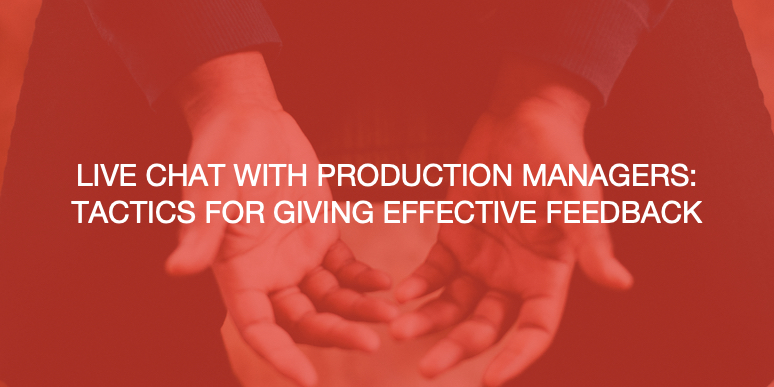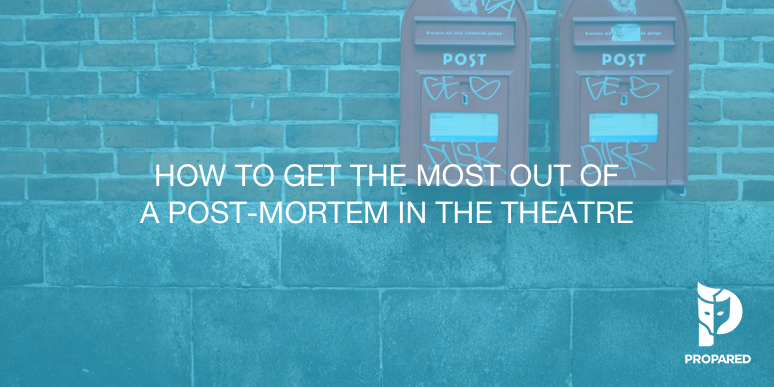
If you sat 10 event managers down in a room and asked them to define the duties of a production manager or event planner, you’d get 10 different answers. Why? For the most part, that doesn’t happen in the corporate world. There’s a hierarchy defined by years of tradition and study by which most companies abide. And it’s pretty stable. Events are different. Every event we work has a new set of goals. Bring awareness to a brand or product. Produce a great music festival. Raise money for a charitable cause. You’re essentially starting a new company every time, especially if you primarily work with freelancers. This production group can and will change from event to event. Roles need to be re-explained and a new round of onboarding may begin.
This creates a host of challenges and can really grind down a team’s efficiency. I’ve had countless conversations with people who find themselves frustrated that someone else isn’t doing “his or her job.” The question I always ask is, “Did you define what the job actually is?” 99% of the time, the answer is, “Yes. Well, sort of. I mean, it’s pretty clear. He or she should know…” The short answer is no. If every event has different goals and involves different people, we managers are going to have to work pretty hard to ensure that everyone knows what to do, when, and how. We’ll also need to establish that each person knows what the rest of the team is doing as well. Unfortunately, this isn’t as simple as, “Hey Jane, you’re the production manager. Everyone! Jane is the Production Manager!”
So how do we do it?
1. Write out job descriptions. In excruciating detail.
The last thing you want to do is double up your team members on the same task because you didn’t clarify what each one should be doing. You’ll lose time and money. And potentially a little of their trust in you that you know what you’re doing. Spend some time and write out job descriptions! Do it once and you’ll have good templates to use for dozens of future events. Even better, pull in some of your internal people to help write them. You might learn something about how you communicate and the perceptions you create. Every good job description should answer the following questions.
-
What is this job’s overall goal/purpose?
-
What are the primary responsibilities? (Hint: Take each responsibility the job entails and detail out the duties and actions that fulfill it.)
-
What decisions is the team member free to make?
-
What decisions is the team member not free to make?
-
To whom does he or she report?
-
Who does he or she oversee?
-
What is the estimated work load (in hours)?
The person you’re hiring should be crystal clear about EXACTLY what is expected for the event. On the flip side, if you’re the one being hired, don’t wait for your employer to give you all of this. These are phenomenal questions to ask during and after the interview process. Such specificity shows that you are thinking hard about the position. It shows your commitment to producing quality work. As someone who does a lot of hiring, I always appreciate it.
2. Build an org chart
Organizational charts are pretty common in the business world. But they can be incredibly helpful for events as well. An org chart is an easy visual map that identifies each member of the production team, the company he or she represents, and the reporting structure. As with job descriptions, the bones of a good org chart can be used again and again once it’s been built. Every time someone new joins the team or you source out new vendors, update and re-distribute it liberally among your partners.
3. Design a Decision Matrix
Often times, someone on the team will have a question and not know where to turn. Who am I supposed to contact when X happens? This is especially important when major decisions need to be made, or someone’s safety is at risk. A decision matrix can address these issues. It, too, is a simple visual document that can get the right information to your team quickly, limiting hiccups in your planning and execution. Same tune. Build these once and you’ll have terrific templates at the ready. Here are a few prompts to get you started.
-
Financial: Who makes final decisions regarding purchasing, budget, or costs?
-
Safety: Who makes decisions regarding guest and employee safety?
-
Design: Who ultimately is responsible for an event’s aesthetic and design, especially when a change needs to be made?
Defining responsibilities, setting expectations: these are some of the most overlooked elements of planning an event. Failure to do so can set you up for some serious headaches. You’ve probably experienced it more than once! Just think about every event as if you are starting a brand new company. Define the roles. Build a reporting structure. Anticipate questions and provide clear pathways to answers. Do all this and you’re next event will be that much more enjoyable.



